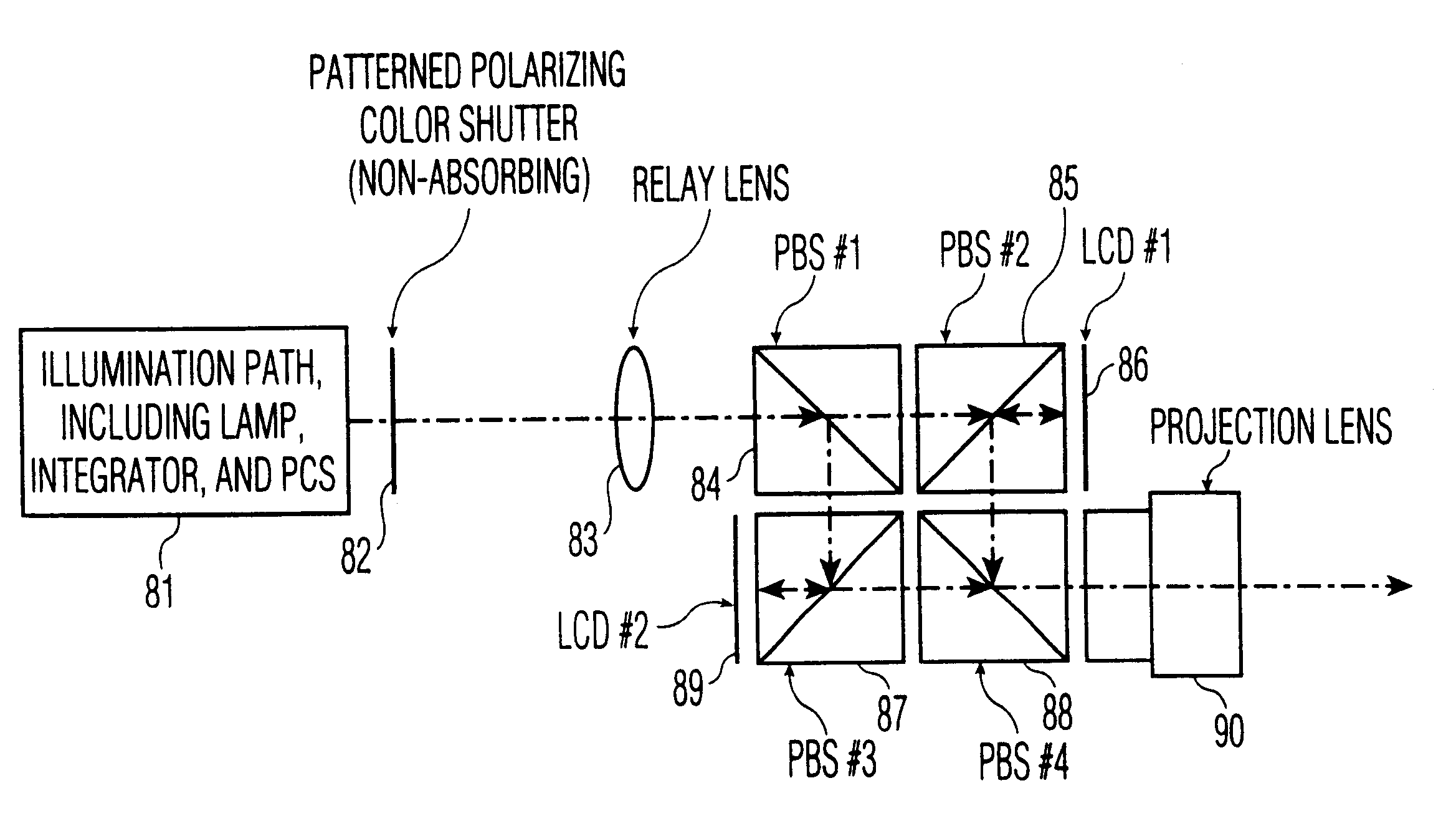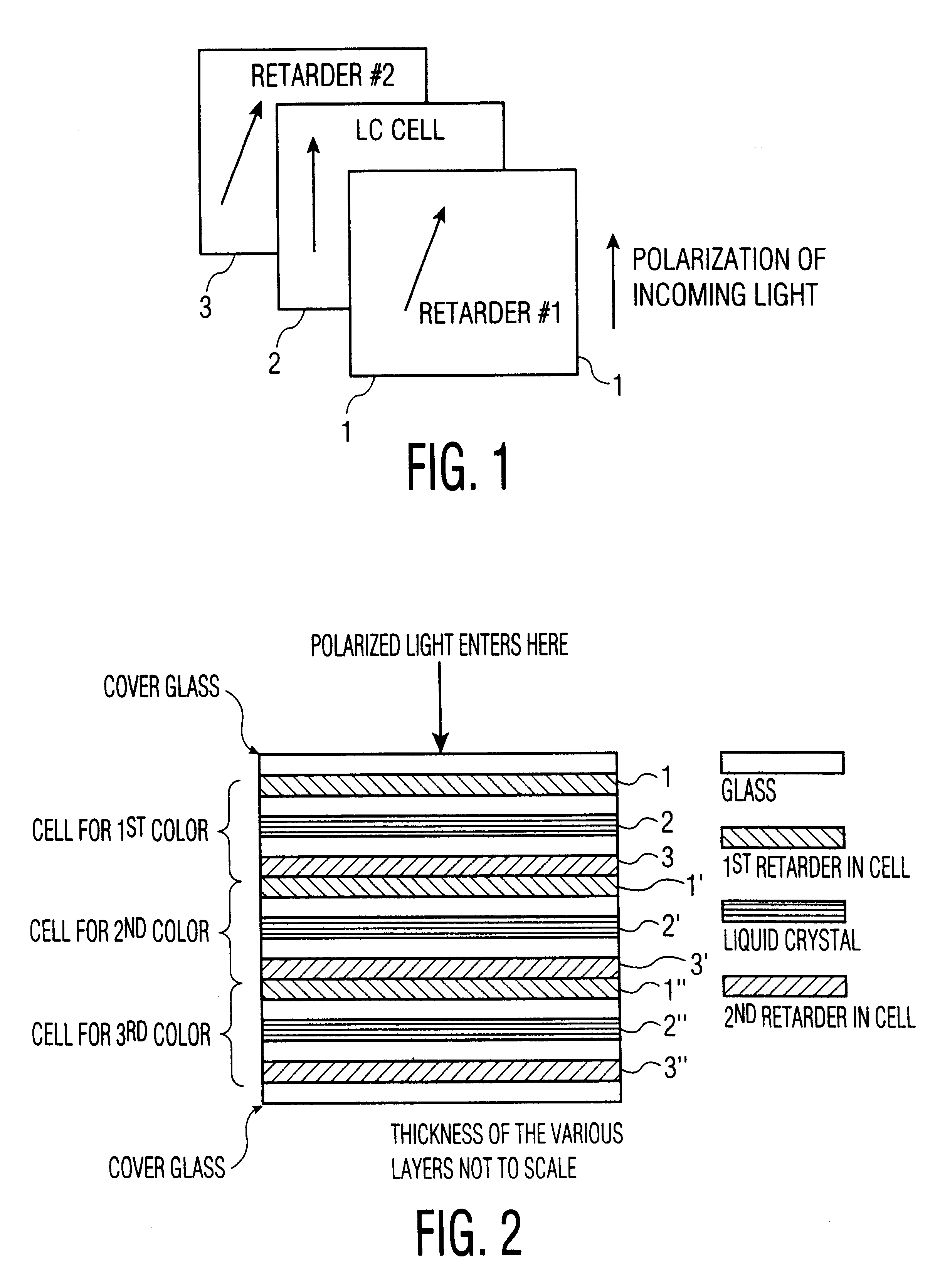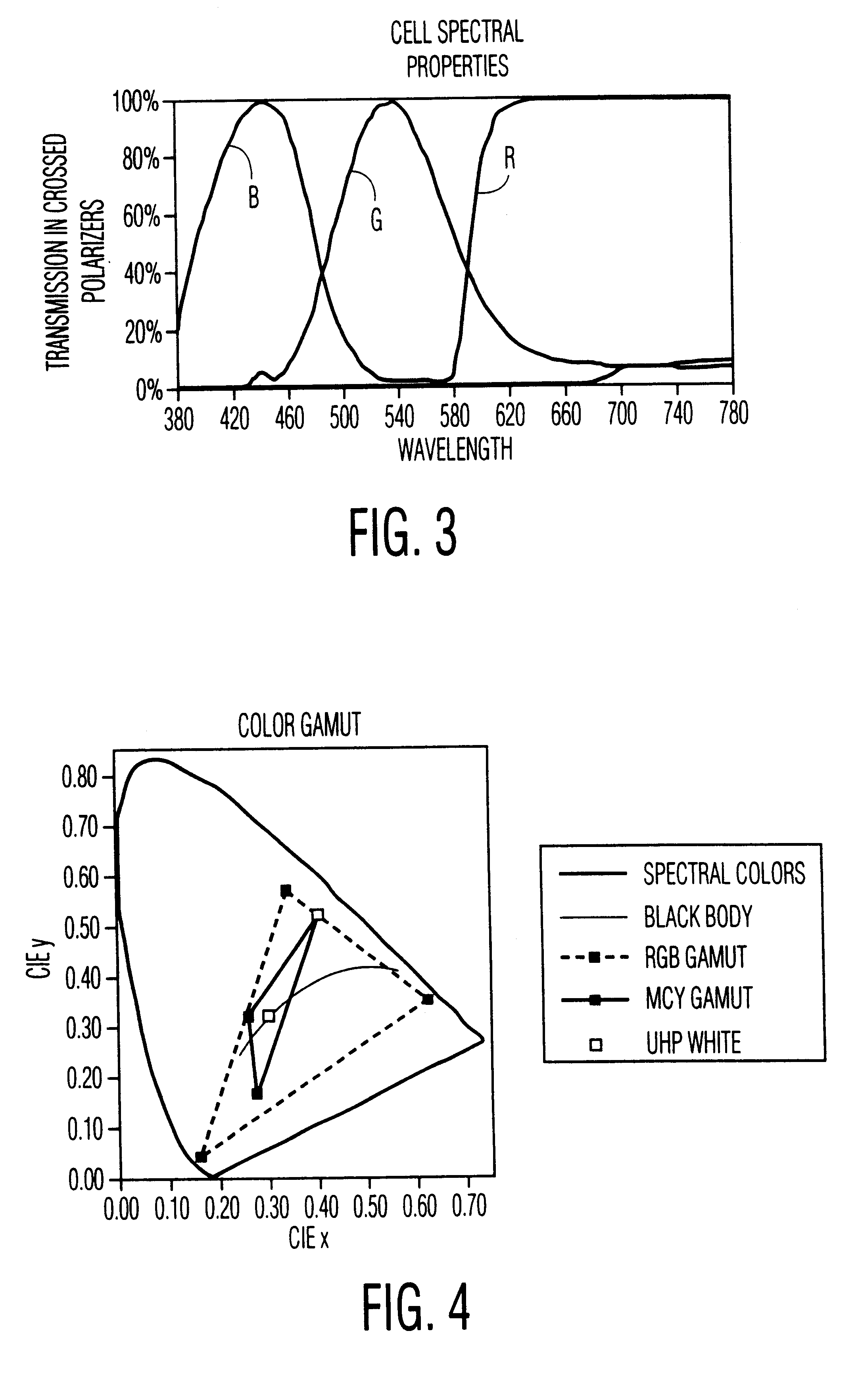Efficient two-panel projection system employing complementary illumination
a projection system and complementary technology, applied in the field of efficient two-panel projection system employing complementary illumination, can solve the problems of limiting the overall gain in lumens possible, inefficient single-panel system, and limited availability of higher-power lamps
- Summary
- Abstract
- Description
- Claims
- Application Information
AI Technical Summary
Benefits of technology
Problems solved by technology
Method used
Image
Examples
example 2
One variation in the color sequencing occurs if one LCD, for example the first LCD 86, is assigned to produce the green, cyan (green+blue) and yellow (green+red) fields, while the other LCD 89 is assigned the red, blue and magenta (red+blue) fields. With this arrangement, the green light never needs to go to the second LCD 89. Therefore, the polarization of the green light in the incoming white light is never modified by the E-SPF, and further, the E-SPF need only be a 2 layer device capable of modifying the polarization of red and blue light rather than a three layer device capable of modifying the polarization of all three colors. Of course, it is obvious that modulation of the polarization of any pair of colors is sufficient to produce a 6 primary color projector: red / blue as in the example, or red / green or blue / green.
It is further noted that, instead of providing a two-layer E-SPF with red and blue modulation, the E-SPF 82 may provide blue and green modulation, thereby assigning...
example 3
In the embodiments described above, the E-SFP 82 is presumed to act in concert with global addressing, i.e., the entire area of each LCD and the color shutter change state simultaneously. See, Shields, U.S. Pat. No. 4,870,396, expressly incorporated herein by reference.
This is not the most common manner of addressing LCDs, however. In the typical LCD (reflective or transmissive) the data is loaded into one row at a time and the state of the LCD changes immediately after the data is loaded. Take, for example, the case of a single panel color sequential system where the data is loaded in the order red, green, blue. While the red data is loading into a row, it is overwriting the blue data in that line from the previous field. As soon as a row is finished loading, the addressing circuitry drops down to the next row and loads the red data for that row, overwriting the previous blue data. Therefore, there is a line traveling down the LCD with blue data below the line and red data above th...
example 4
The present projection system would also work for transmissive LCDs, as shown in FIG. 8. In this case, two plane fold mirrors 97, 98 replace the second and third PBS 85, 87 of FIG. 7.
It is noted that in this system, the two LCDs 98, 99 see a different number of reflections in both the illumination path and the imaging path. While the direction of scrolling the color shutter would be reversed left to right for the second LCD 99, relative to the first LCD 98 in the illumination path, if horizontal scanning is used (in the plane of the paper), this reversal would be corrected in the imaging path. The left to right reversal of the images on the two panels with respect to each other can be corrected by known techniques. As can be seen in FIG. 7, this problem does not occur in a reflective LCD version. This simplifies system design because the images are not reversed with respect to each other.
PUM
| Property | Measurement | Unit |
|---|---|---|
| polarization angle | aaaaa | aaaaa |
| polarization angle | aaaaa | aaaaa |
| polarization angle | aaaaa | aaaaa |
Abstract
Description
Claims
Application Information
 Login to View More
Login to View More - R&D
- Intellectual Property
- Life Sciences
- Materials
- Tech Scout
- Unparalleled Data Quality
- Higher Quality Content
- 60% Fewer Hallucinations
Browse by: Latest US Patents, China's latest patents, Technical Efficacy Thesaurus, Application Domain, Technology Topic, Popular Technical Reports.
© 2025 PatSnap. All rights reserved.Legal|Privacy policy|Modern Slavery Act Transparency Statement|Sitemap|About US| Contact US: help@patsnap.com



